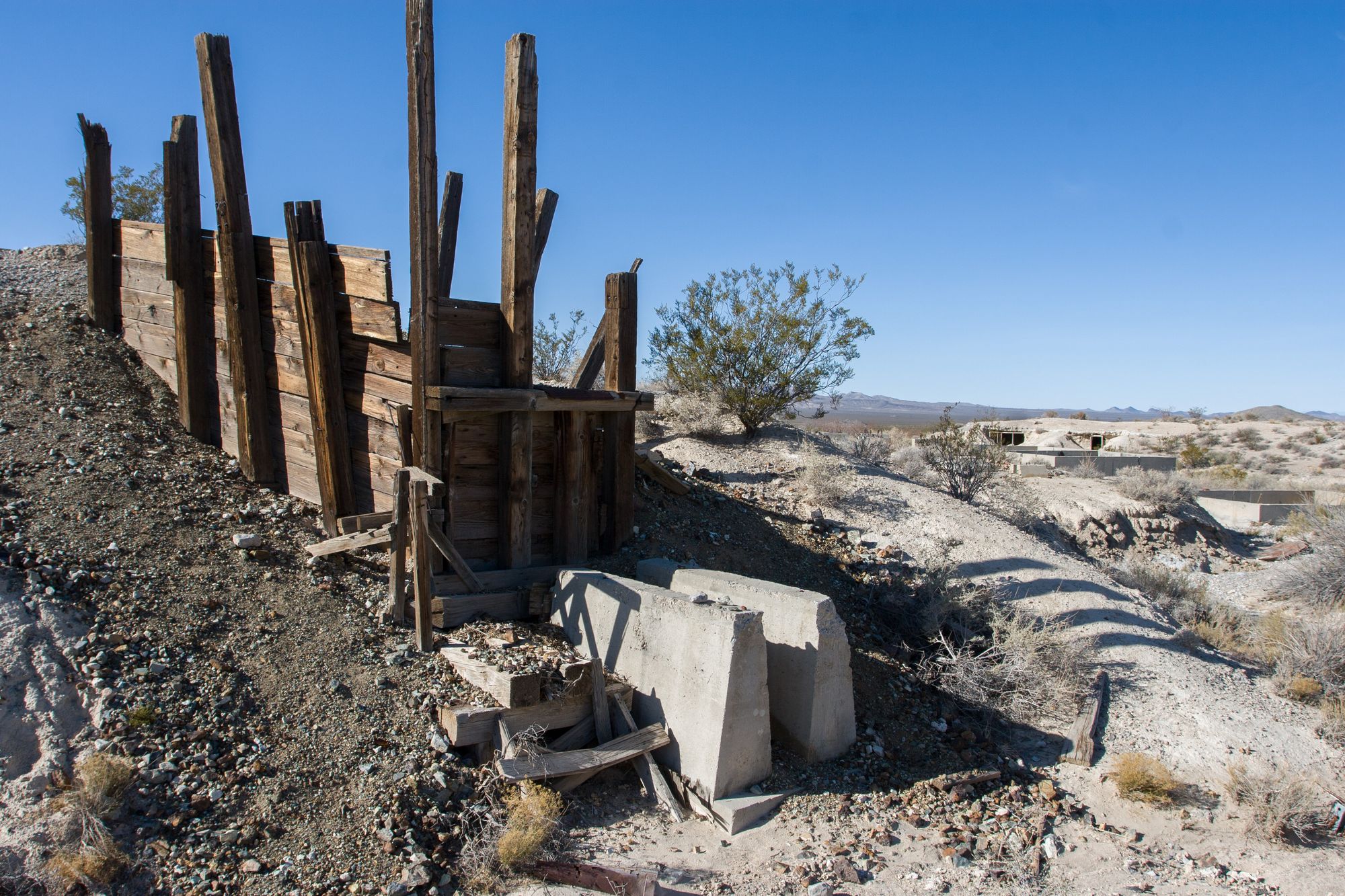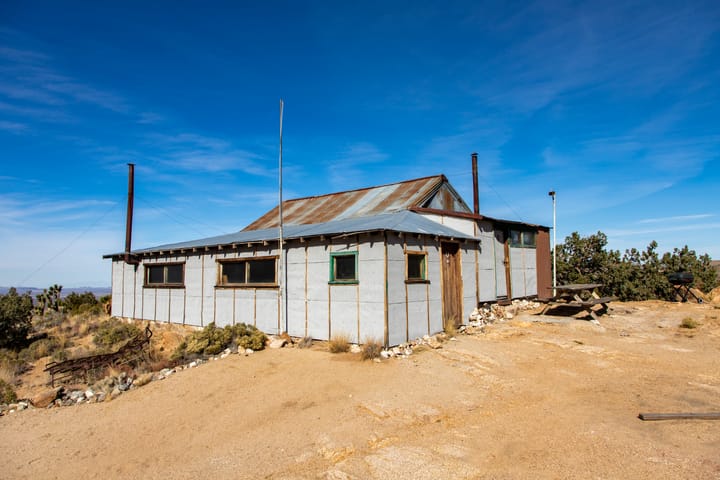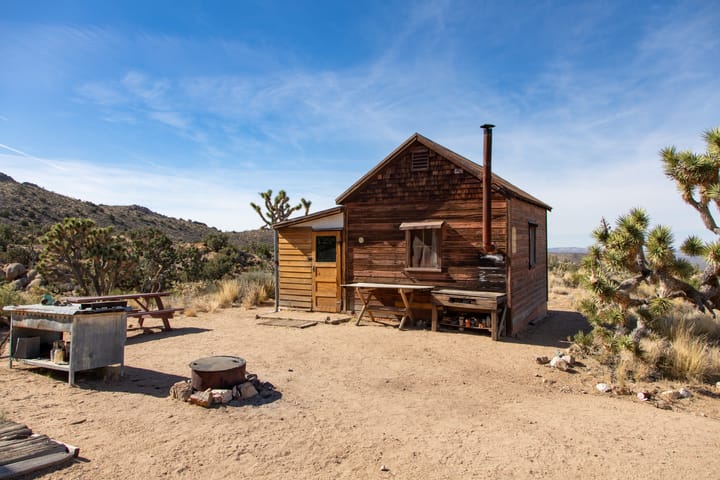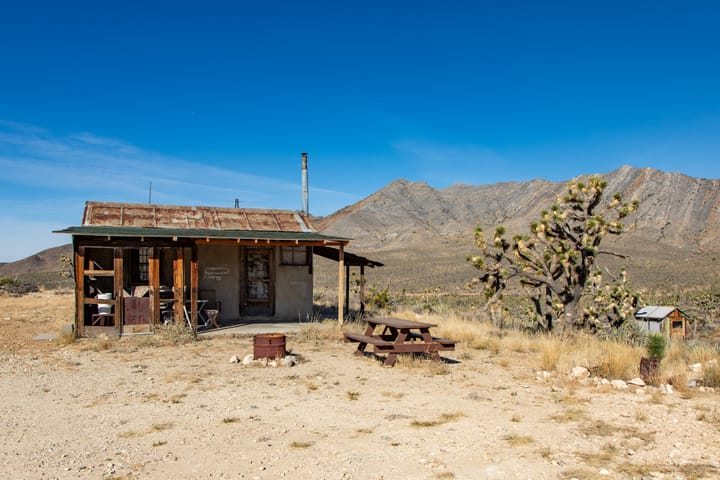Just off Interstate 15, in the shadow of Clark Mountain, lie the scattered ruins of Rosalie, also known as Valley Wells.
Rosalie's tale began in 1898 when the Ivanpah Smelting Company of Los Angeles recognized the potential of nearby copper deposits. They sank two wells at a site about 5 miles from the Copper World Mine, establishing what would become known as Valley Wells or Rosalie.
In January 1899, the company erected a fifty-ton furnace, marking the beginning of large-scale copper processing in the region. By April, the operation employed 85 men under the supervision of V.C. Reche. A remarkable fleet of 140 mules in seven 20-mule teams hauled 35 tons of ore at a time from the mine to the smelter. From there, up to 20 tons of copper bullion were shipped every four days to Manvel (also known as Barnwell), 30 miles to the southeast, where it connected with the California Eastern Railroad.
As copper production ramped up, Rosalie blossomed into a proper town. On April 24, 1899, the Ivanpah post office was relocated to Rosalie. The settlement grew to include wooden buildings and dwellings ingeniously carved under a roof of Pleistocene caliche—a natural cement-like layer of hardened calcium carbonate.
Despite initial success, Rosalie's story followed the boom-and-bust pattern typical of desert mining towns. By July 1900, operations ceased due to litigation issues, and the post office was abandoned on July 31, 1900. Over the next two decades, the town's fortunes would ebb and flow with the demand for copper and the various companies that operated the nearby mines.
The outbreak of World War I and its voracious appetite for copper breathed new life into Rosalie. In November 1917, a new 100-ton capacity blast furnace was opened. The operation expanded significantly, with about 100 tons of ore per day being hauled from the Copper World Mine to the smelter by tractor. In addition to processing new ore, the operation treated 13,000 tons of slag from earlier operations, averaging between 2 and 10 percent copper content. The workforce grew from just six men in 1916 to sixty by 1918. Between 1916 and 1918, the operation produced about 1,735 tons of ore containing approximately 4% copper, as well as 1,353 tons of matte containing 25-28% copper.
The end of World War I in November 1918 brought a rapid decline in metal prices, leading to the closure of the Copper World Mine and the Rosalie smelter. This marked the end of major operations at the site, although there were occasional periods of activity in subsequent years, including some processing of old tailings during World War II.

Today, visitors pulling off I-15 can still spot concrete foundations, weathered acid tanks, and a flow of glossy black slag that stretches from the smelter site like a frozen river of lava. The most intriguing remnants are the miners' living quarters carved into the caliche layer.
Environmental concerns have led to cleanup efforts at the Rosalie site in recent years. In the late 1990s, the Environmental Protection Agency ordered the removal of the assay house and some tailings dumps due to the presence of arsenic mixed with pyrite.
While mining defined Rosalie's early years, ranching became part of its later legacy. The Valley Wells Cemetery, located northwest of the smelter site, tells part of this story. Among those interred are Charles "Boots" Yates and his wife Bessie, who ran the Yates Ranch cattle operation from 1894 to 1952, using Rosalie as their headquarters.
GPS Waypoints
- Rosalie Copper Smelter site: 35.4661°, -115.6815°



